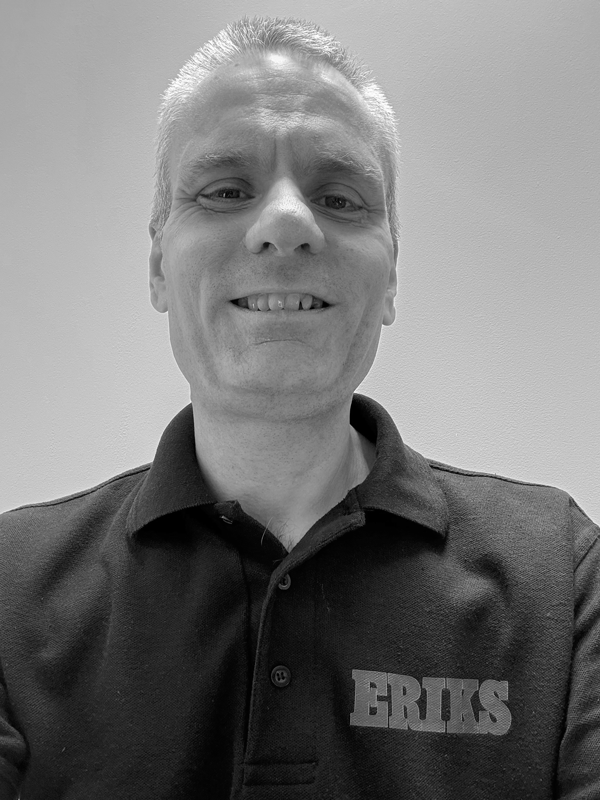In this article
The Best Strategies for Preventing Occupational Hearing Loss
Harmful noise cannot be seen, but its resounding presence poses a risk that concerns everyone. Our world has become so loud that 'noise pollution' is considered a public health threat. Despite industry regulations, noise-induced hearing loss (NIHL) is the most commonly reported occupational medical condition in the EU 1 and 16 million people in the European workforce suffer from work-related hearing impairments.2
Because hearing loss develops over time, it can easily remain undetected until it is too late, and the permanent damage to the ear has already been done. Yet, noise-induced hearing loss is 100% avoidable with the right preventative action.
A solution that truly makes a difference begins with understanding the full scope of the hazards and factors impacting hearing protection. Together with our partner 3M, the global leader in hearing protection, and our in-house expert, Simon Horney, Category Manager Industrial MRO and Safety at ERIKS, we present the newest hearing loss prevention strategies and technology for implementing an effective hearing conservation programme (HCP).
Current Innovations
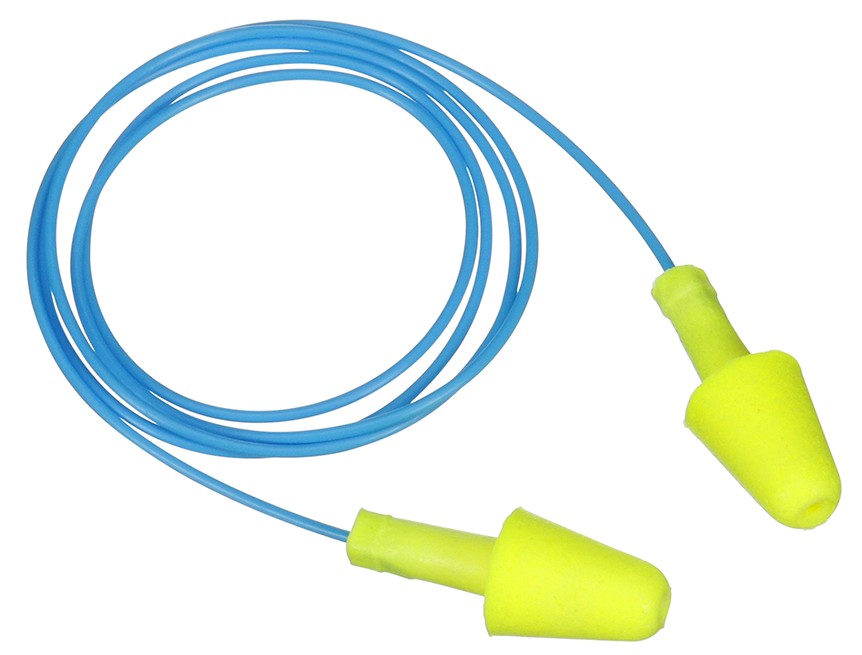
“The area of hearing protection is developing, but most of what comes out is a variation on a theme”, states Simon Horney. However, a recently launched entirely new product is the 3M™ EAR™ Flexible Fit Earplug. This earplug is unique for two reasons, explains Simon. "Firstly, it is made of foam, usually used with disposable earplugs. So, you use them for one shift and throw them away. But this is a reusable earplug so that it can be washed and reused up to two weeks. Secondly, it is also the only earplug on the market tested and approved to different safety levels.”
For instance, this earplug provides both safety levels SNR 30 and SNR 35. The dual rating is because most people insert earplugs using one hand – when you are supposed to use two hands. “So, they often don't get the full protection they think, because all they've done is push it down their ear,” Simon explains. “The 3M™ EAR™ Flexible Fit Earplug gives you an SNR 30 even if you only use one hand. But if you want something better, you can do the traditional two-handed fit and get the SNR 35.” This means that if you take the number 30 or 35, it will reduce the noise in the area in decibels by roughly that amount. So, if the working area is 100 decibels, like the sound volume of a power tool, and you do a two-hand insertion, it will reduce the protection to about 65 decibels, the volume of a conversation.
SNR vs. PAR
SNR – Single Number Rating – is a specification used to determine protection levels given by all hearing protection. It provides an easy reference to compare the different types of hearing protection. Yet, if you are using the SNR found on the hearing protection packaging as a guide, you may not be providing accurate protection levels for every worker. This is because ears come in many shapes and sizes. To make sure all workers are getting the protection they need, you need to know their Personal Attenuation Rating (PAR). Finding each employee's PAR, by means of a fit test, will help ensure that workers' hearing is protected and that they are compliant with the regulations.
No one-size-fits-all approach
"I often find that end-users try and take too simple an approach towards hearing protection”, thus Simon. “So, they try to use one type of earplug that fits everybody, and it's very difficult to do that."
Each person has a different ear canal shape, size, and anatomy, so there is no one-size-fits-all hearing protection solution. In addition to the standard sort of cylindrical shape earplugs, tapered shapes and different features are available. The importance of this choice is sometimes underestimated. “You often find that people do adopt the various choices of safety footwear or hand protection, but maybe only one type of earplug. And people are different, so they need that choice,” Simon notes. “The application engineers of ERIKS, in turn, can help advise in the best selection.” The key to achieving optimal protection is having the best fit possible. In collaboration with 3M, a suggestion can be made that fits most of any user's requirements and will offer protection to the correct level.
Fit Test
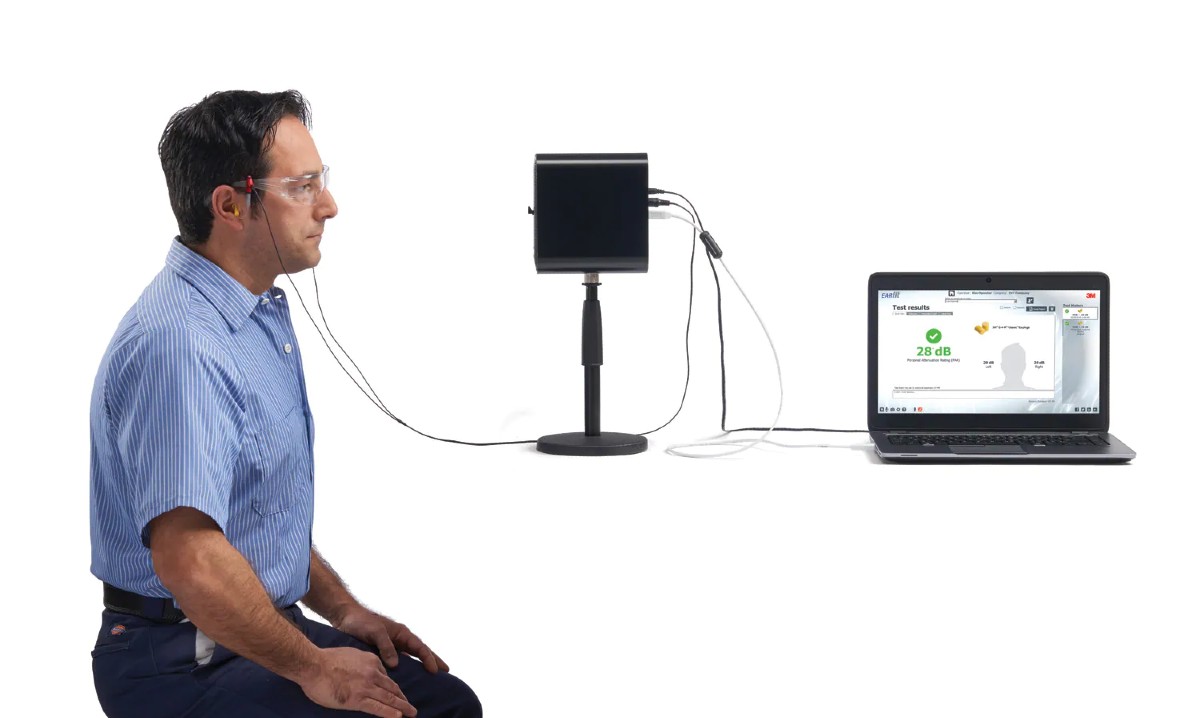
Fit testing is electronic software that can measure the effectiveness of the hearing protection that is actually being worn. Every individual has a different way they receive the noise. Thus, the results of the same protection can be different for each individual. Through the 3M™ E-A-Rfit™ Dual-Ear Validation System, an individual can be tested and recorded for the amount of protection they actually get in the form of their personal PAR rating. This can be very useful for the employer for several reasons. It proves that the protection is adequate for the intended application. “But you do hear about companies who've used this to contest claims successfully," says Simon. “There's one particular company who had a claim from an employee for noise-induced hearing loss because of work. And they found out that he was actually a drummer in the evenings. Evidently, the hearing loss resulted from that. And there are many similar stories around the area of hearing conservation." A fit test assessment can prove that the right level of protection is provided for the application. It is a way to protect the workers adequately and a means to protect the company from unwarranted claims.
Testing Methodology

3M™ E-A-Rfit™ Dual-Ear Validation System uses an objective method called field microphone in-real-ear (F-MIRE). The sound levels in the ear canal underneath the hearing protector and the sound levels outside the hearing protector are measured with dual-element microphones. One microphone element measures the ear canal signal with a probe tube that passes through the earplug or earmuff cushion. The second microphone element measures the external sound level during validation. The difference between these two measurements allows the hearing protector's attenuation to be estimated. Read more about the E-A-Rfit™ Dual-Ear Validation System and request a no-obligation fit test.
Hearing Protector Selection
Hearing protector selection involves the user finding the earplug or earmuff that best meets their personal needs for comfort, attenuation, and ear canal size. The operator can test a variety of hearing protectors available from 3M, recording all aspects of the 3M™ E-A-Rfit™ validation session. These include: the PAR results, fit test dates and other information that can be saved as part of programme management for your company. This will help you ensure employees have the proper fit and know-how.
Protection Levels
Every individual is different, and likewise, every environment is different. Workers can face a wide range of sound levels throughout the day and in different areas at the same facility. “People don't always realise that you can overprotect and under protect. For example, using an SNR 35 earplug in an area where the sound level is 100 decibels takes the section down to 65 decibels approximately. That's actually a little bit low," according to Simon. “So for an area like 100 decibels, ideally you want to get the protection so you should be able to hear the people around you. And more importantly, so you can hear important cues like the fire alarm or the forklift truck, as well.”
Situational Awareness
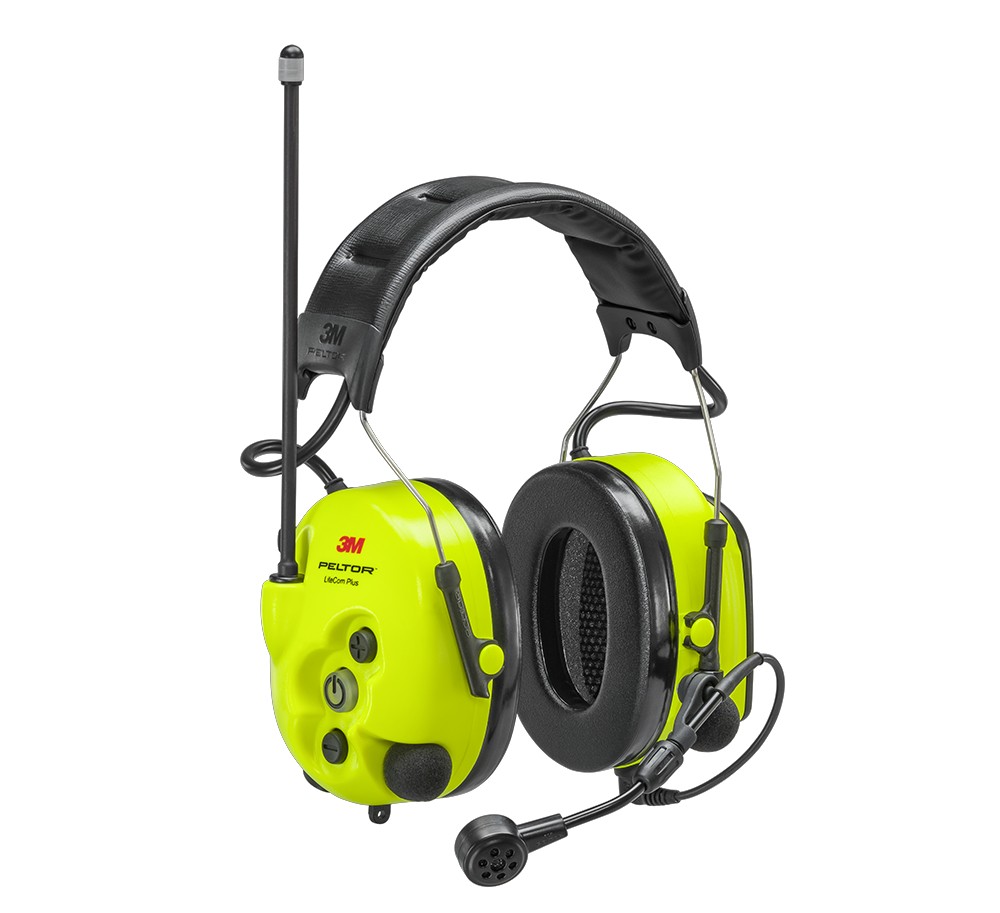
In many situations there is an essential need for workers to communicate or hear warning sounds while it is vital that their hearing is protected from hazardous noise levels. The more advanced hearing protection will provide so-called ‘noise compression’ – where harmful sounds are reduced and non-harmful sounds, like speaking, are amplified. This advanced protection is most common in electronic earmuffs that will block out the wrong frequencies, and control the noise, often to an 82-decibel level. “Or you can even go for the option of Bluetooth communications,” adds Simon, “which are great in particularly very noisy areas where you can directly speak to your staff or your colleagues from a safe COVID distance, or even from the other side of the manufacturing plant. You can then communicate properly without taking off the earmuff to hear your colleague.”
“This type of protection became very popular during COVID for social distancing reasons. It is a more expensive solution, but it ensures there's no miscommunication. You want to hear clear instructions from a colleague before carrying out a task or doing something. If you misheard them, you could cause an accident or some other issues with the production. These earmuffs will all be presented as options. They all carry a cost, and they all have different benefits.”
Training
“But the most important aspect with any hearing protection,” according to Simon, “is that the people who wear them need to be trained how to wear them properly.” Compliance in using hearing protection is not always easy to achieve. “But some of that is down to the quality of the training”, states Simon. “Most of the people on the factory floor have had to wear earplugs. And I've been as guilty as other people and have taken an earplug out or left it partly out, so I could hear what the customer is saying. I even know of cases where people have deliberately cut the earplug in half and put it back in, so it looks like they are properly wearing it.” Unfortunately, the fact that hearing loss is permanent is still too often overlooked. “It’s not like when you go home at night your hearing all comes back. It doesn’t. It can only get worse.”
Generally, there’s a move towards using new terminology in the industry to increase awareness. Instead of calling it hearing protection, it is referred to as ‘hearing conservation’. To make people realise it is a serious issue. Noise is now officially recognised as an irreversible health hazard, following the PPE Regulation (EU) 2016/425.6 It is placed in the highest risk category, like respiratory protection, for example. This means the equipment protects against irreversible damage. “It isn't just about measuring the noise”, says Simon. “It's about all the various steps you can take to reduce that harmful noise – a long term approach applied to your specific application. You need to have a programme in place, and in some cases it starts with changing the culture.”
Request a 3M™ E-A-Rfit™ Validation System Demonstration
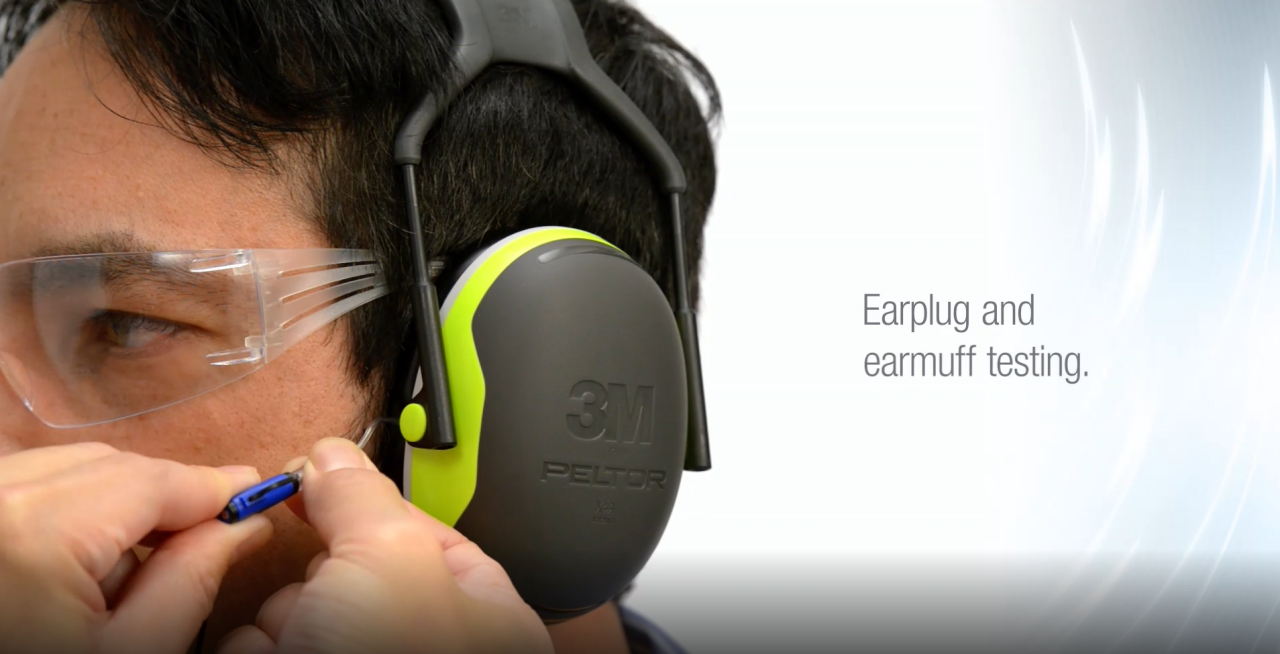
For more information, contact your local ERIKS Service Centre, who will be happy to discuss your options.
#3M #ERIKS #LetsMakeIndustryWorkBetter #EarMuffs #EarProtection #Hearing #HearingLoss #HearingProtection
